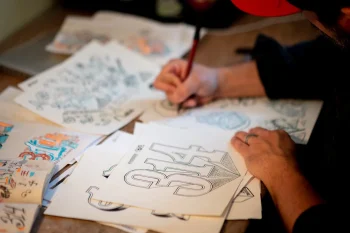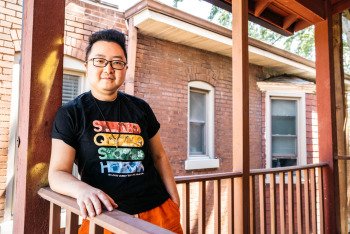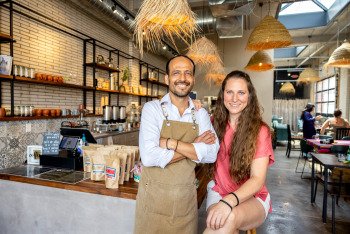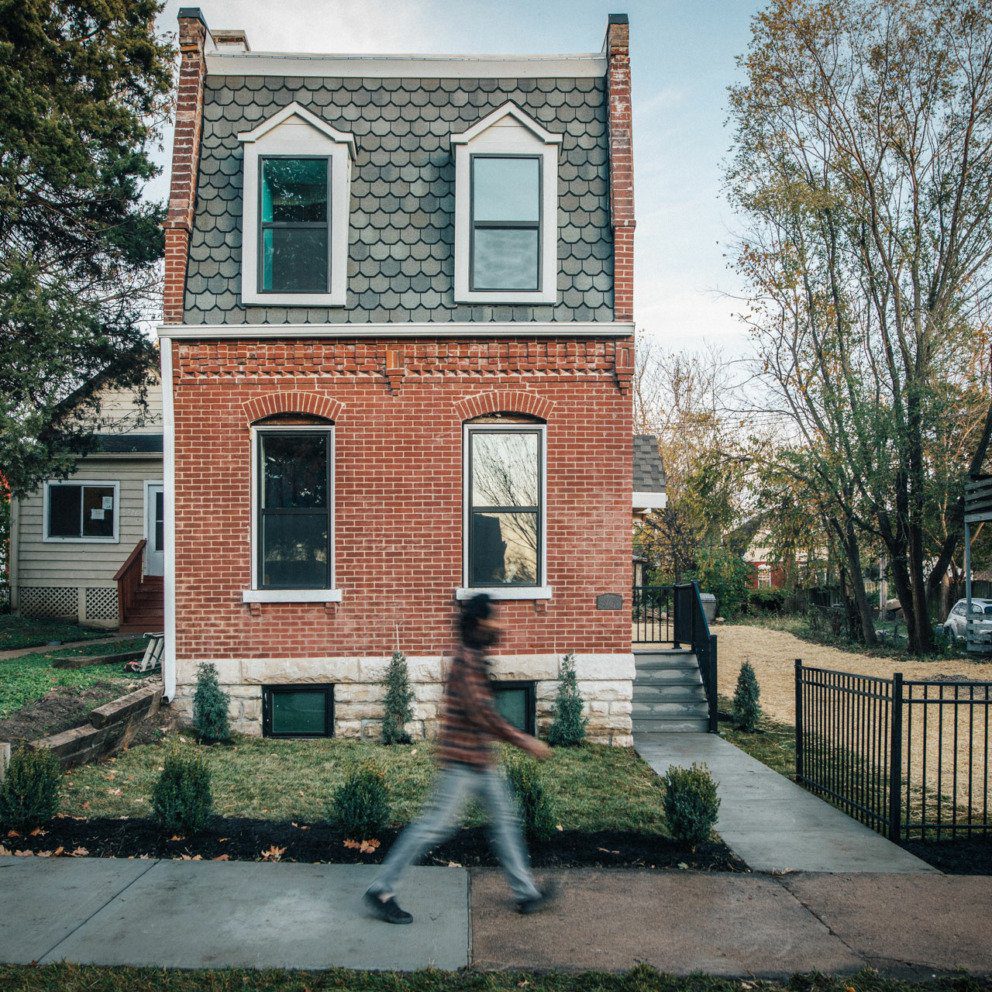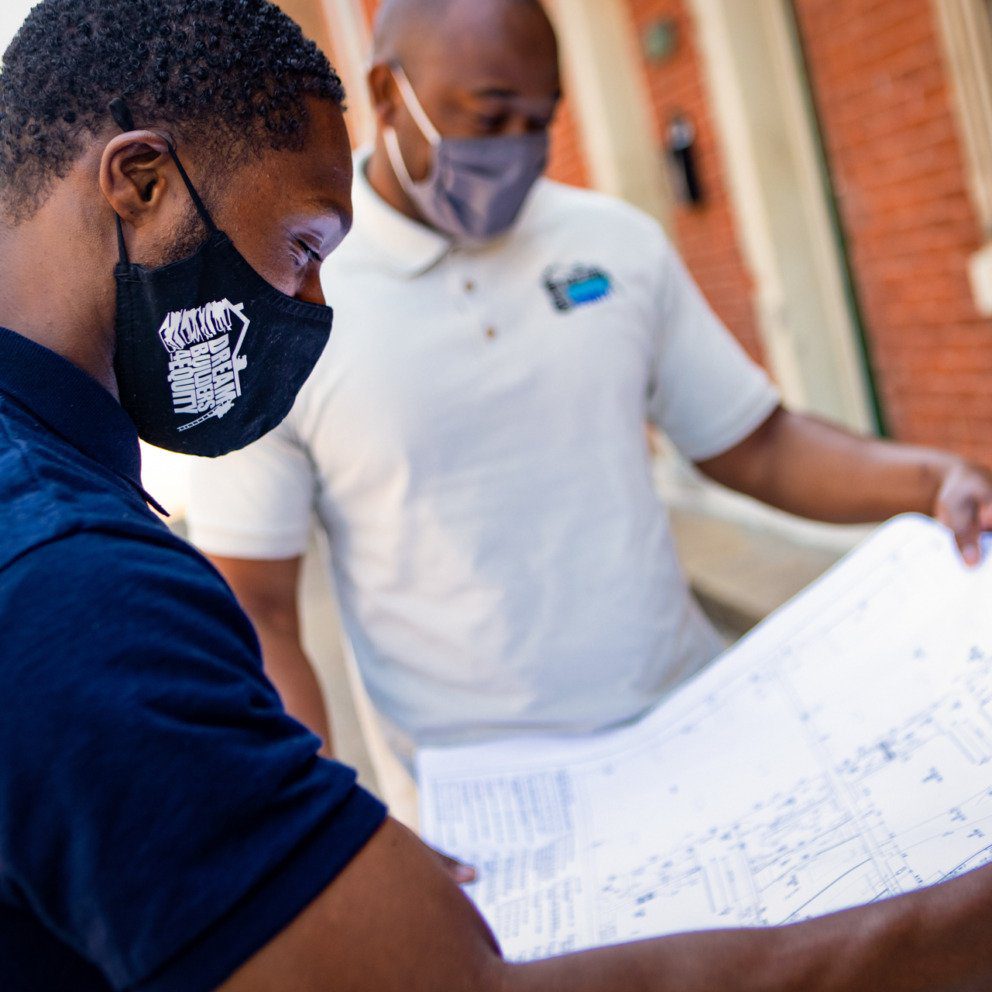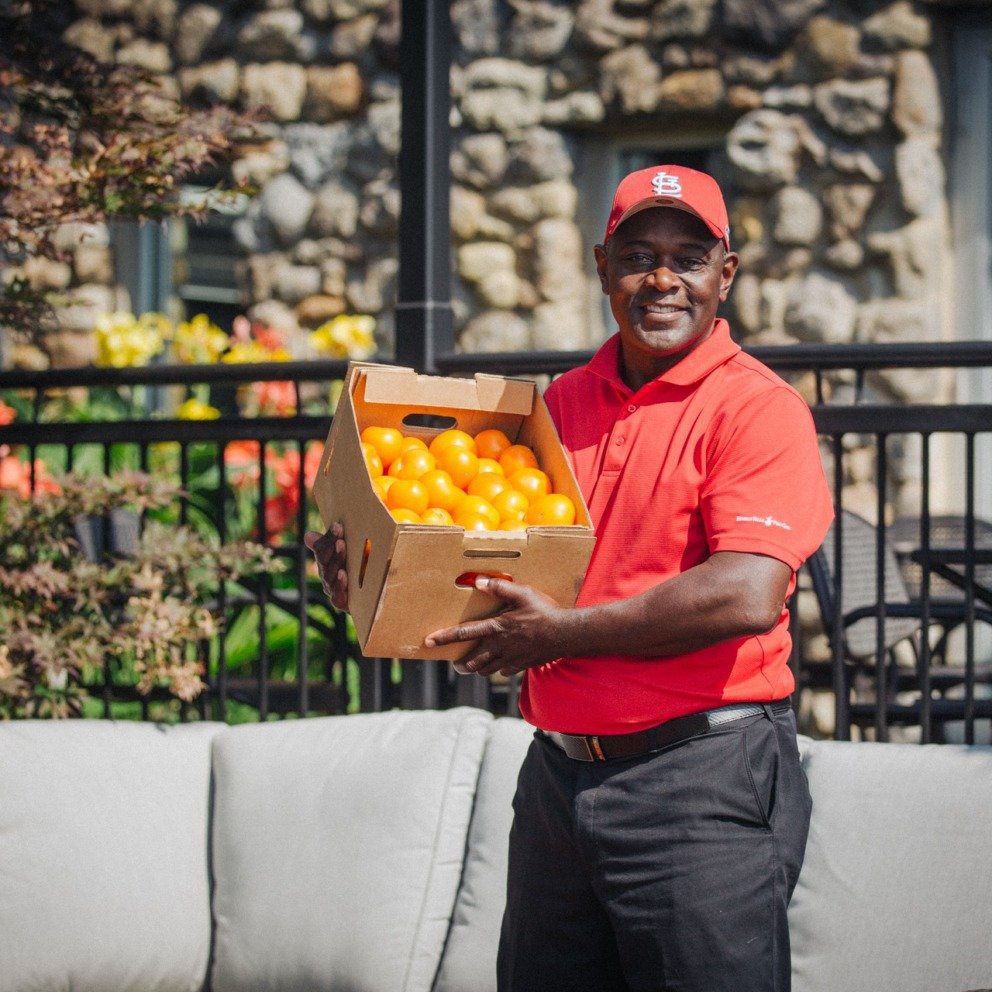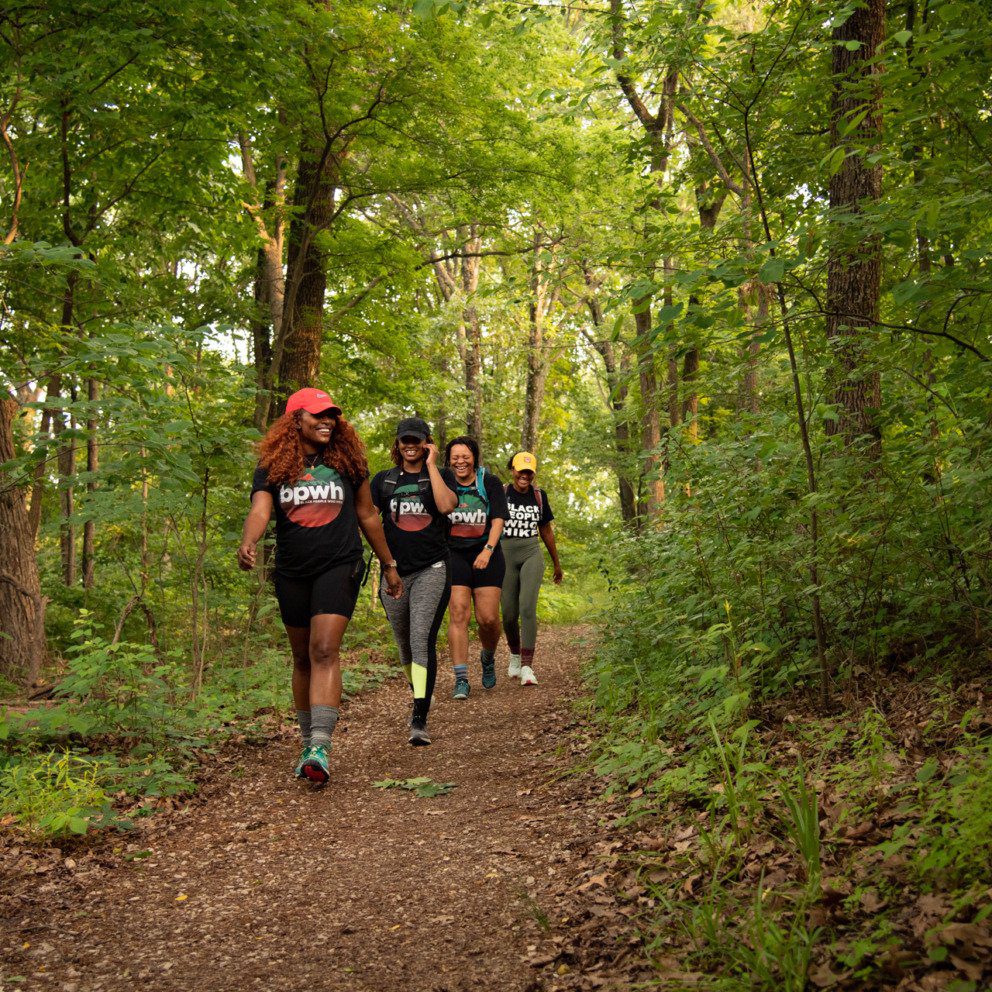Branching Out
Forest ReLeaf’s Rebecca Hankins is leading the way in getting trees to the communities that need them.
At first glance, the rows of tree seedlings at Forest ReLeaf of Missouri this spring share a striking similarity to twigs. However, a closer look reveals green buds beginning to emerge from the abundance of branches — not only painting a promising picture for the growth of the trees themselves, but also for the community that will be entrusted to cultivate them.
“For the past 29 years we have been primarily a tree nursery and tree distributor,” says Rebecca Hankins, partnership manager for Forest ReLeaf. Since its founding in 1993, Forest ReLeaf has planted more than 230,000 trees with the goal of improving the health of communities and making those communities better places to live and work.
“There has been a lot of amazing work,” says Hankins. “But when you talk about investment, environmental justice and communities that have been historically disinvested in, you have to have a different approach.”
That’s where Hankins comes in.
“Last year American Forests (the oldest national nonprofit conservation organization in the United States) released a tree equity scorecard and the phraseology of tree equity was coined and became the thing to talk about,” says Hankins. “Tree equity is the idea that trees aren’t equally distributed across a region or across a city and that inequity creates a lot of public health issues for communities, and communities that are redlined and disinvested in are those communities that also lack tree canopy.
“As our offices are in St. Louis, we want to make an impact within our community, in addition to our presence across the state. And so my specific role is to build those partnerships and to address tree equity in St. Louis.”
Hankins’ role is one that was created specifically for her, with her passions for both the environment and social justice in mind. While she had a successful career as an international product manager in the outdoor recreation industry, she felt called to do more for the environment, and left that position to enroll in the horticulture program at St. Louis Community College – Meramec campus.
“I was super impressed with the community college, and just how the horticulture industry as a whole is so vastly different than the business world,” says Hankins. “I tried several different internships to really find my way and I realized I was most passionate about advocacy work, but there was no class on advocacy. So my last semester there, I was president of the Botanical Society and I put on a Social Justice in Horticulture conference on March 5, 2020.”
It was at this event that Hankins connected with Forest ReLeaf Executive Director Meridith McAvoy Perkins. Hankins recalls Perkins telling her that while Forest ReLeaf was doing great work, it wasn’t having the reach that they thought it could.
“Perkins said, ‘Our trees are going to all the same people — how do we change that?’” says Hankins.
With expanding that reach as her goal, Hankins began her work with Forest ReLeaf and is beginning to see the impact of her efforts. Recently, the organization has been awarded three environmental justice grants. One of these was the Arbor Day Foundation’s first-ever Environmental Equity Grant, a tree-planting initiative in partnership with 4theVille for members of The Ville community in The Ville, Kingsway East and Greater Ville neighborhoods. The area was awarded the grant because of social inequity and lack of tree canopy.
“We have a 200 tree-planting goal within that community over two years,” says Hankins. “Fifty of those trees will be on public land that Forest ReLeaf will steward. That means we will water during the summers for the first two years, which are the most critical in a tree’s life for establishment. Then our goal is to provide and distribute 150 trees for private property plantings. All of our trees are grown for distribution for public or nonprofit land, so this grant allows residents to access our trees for their private properties, which is huge.”
The other two grants Forest ReLeaf received are through Treesilience, a national initiative administered by the Nature Conservancy aimed to promote healthy, resilient tree canopy in cities and build more resilient urban forests. St. Louis was one of just three cities selected to be a part of this pilot program.
“There are communities where a lot of the tree canopy that does exist is aging,” says Hankins. “So you’re dealing with a mature tree canopy that is dying; you’ve got trees that are falling. And when it’s on private property, unfortunately, the city can’t touch it so it becomes the burden of the homeowner to have that tree removed. It requires a lot of funds to do tree removals and to provide that free of charge or at a reduced cost for homeowners is huge.”
While people may think that areas with low percentages of tree canopy just need more young trees planted, having a healthy tree canopy is not quite that simple.
“It seems counterintuitive — we know we don’t want to take down any trees, but when you look at an entire canopy of an area, you can’t just count new trees planted. You have to take into account the existing canopy that’s already there, and if those trees are already dead or dying, they’re no longer providing the eco-services,” says Hankins. “They’re becoming liabilities for that community, and we need to help replenish that canopy and manage that canopy.”
The first Treesilience grant, in collaboration with the City of St. Louis Forestry Division, will address both removal and planting of ash trees due to the Emerald Ash Borer decimating ash tree populations; and the second Treesilience grant, in partnership with Beyond Housing, will address the private properties in the 24:1 footprint in North St. Louis County. For both grants, the Davey Tree Expert Company is providing their removal expertise.
“That particular grant is a three-part grant: tree removal from private property, tree planting and youth workforce development,” says Hankins. “Beyond Housing has a dedicated community forester who has a lot of wonderful tree data and has a lot of the relationships within the community, so we are working with residents to identify high-priority tree removals — removal of dead, dying or hazardous trees, so not healthy trees — and tree planting, which Forest ReLeaf is providing the trees for.”
According to Hankins, the 24:1 footprint was specifically chosen due to its low tree canopy.
“Most tree canopy goals for a city, which are set by the U.S. Forest Service, are 40 percent,” says Hankins. “And a lot of these areas are 20 percent and under.”
Forest ReLeaf’s most popular program, Project CommuniTree, provides free trees to community groups for planting projects. Trees are grown and cared for by volunteers, then distributed each spring and fall. Aaron Dohogne is one St. Louisan who has been an avid participant in the program and planted more than 200 trees in the past five years, as well as spread the word about the program to others.
“I’ve been planting trees since the spring of 2016,” Dohogne says. “But it’s not just me. I’ve planted with members of the Lindenwood Park Neighborhood Association. I’ve planted with students from Gateway Science Academy at Tilles Park. I’ve planted with other volunteers at Christy Park and Joe Leisure Park and many of these volunteers are helping out year after year. And these volunteers have watered trees throughout the summer, in order to help keep them alive.”
Forest ReLeaf’s mission resonates strongly with Dohogne, who has spent hundreds of hours volunteering with the organization.
“I love how accessible Forest ReLeaf makes native-to-Missouri trees. I feel so lucky to have them in Missouri. It’s kind of like a dream: free trees for parks and public lands, affordable trees to purchase, nice people,” he he says with a smile. “What more can you ask for?”
While trees add beauty to the landscape, people may not know that the tree canopy plays a part in a person’s health.
“Trees filter air pollutants,” says Hankins. “And we all deserve to breathe clean air. These communities often suffer from higher asthma rates and higher hospitalizations because of asthma.”
Trees also provide shade, which can reduce energy costs for homeowners. Heat-related illnesses and strokes occur in these communities at higher rates in part because of the lower percentage of tree canopy.
“Our mission is to get trees in the hands of communities that need them,” says Hankins. “And I think there is so much good and momentum and upswell of pride within St. Louis, and I feel like trees echo all of that.”
As do the plethora of partnerships playing a part in making these projects possible.
“We were already moving in this direction and these programs helped us really have a meaningful way to do the work,” says Hankins. “And it’s really exciting because we’re not doing it by ourselves. We are engaged with other partners who have a similar mission. And by doing it together, we’re able to amplify the impact.
“Trees shouldn’t be a luxury. Trees should be a necessity in every living space, in every community. We are very fortunate that we have been granted with this responsibility to equitably provide tree canopy to these communities.
“I believe we all deserve the benefits that trees provide.”
Join the Story
- Learn about how you can volunteer with Forest ReLeaf.
- Apply for free trees for your community with Forest ReLeaf’s Project CommuniTree program.
- Listen this St. Louis Public Radio story with Executive Director Meridith McAvoy Perkins to hear more about Forest ReLeaf’s work.

